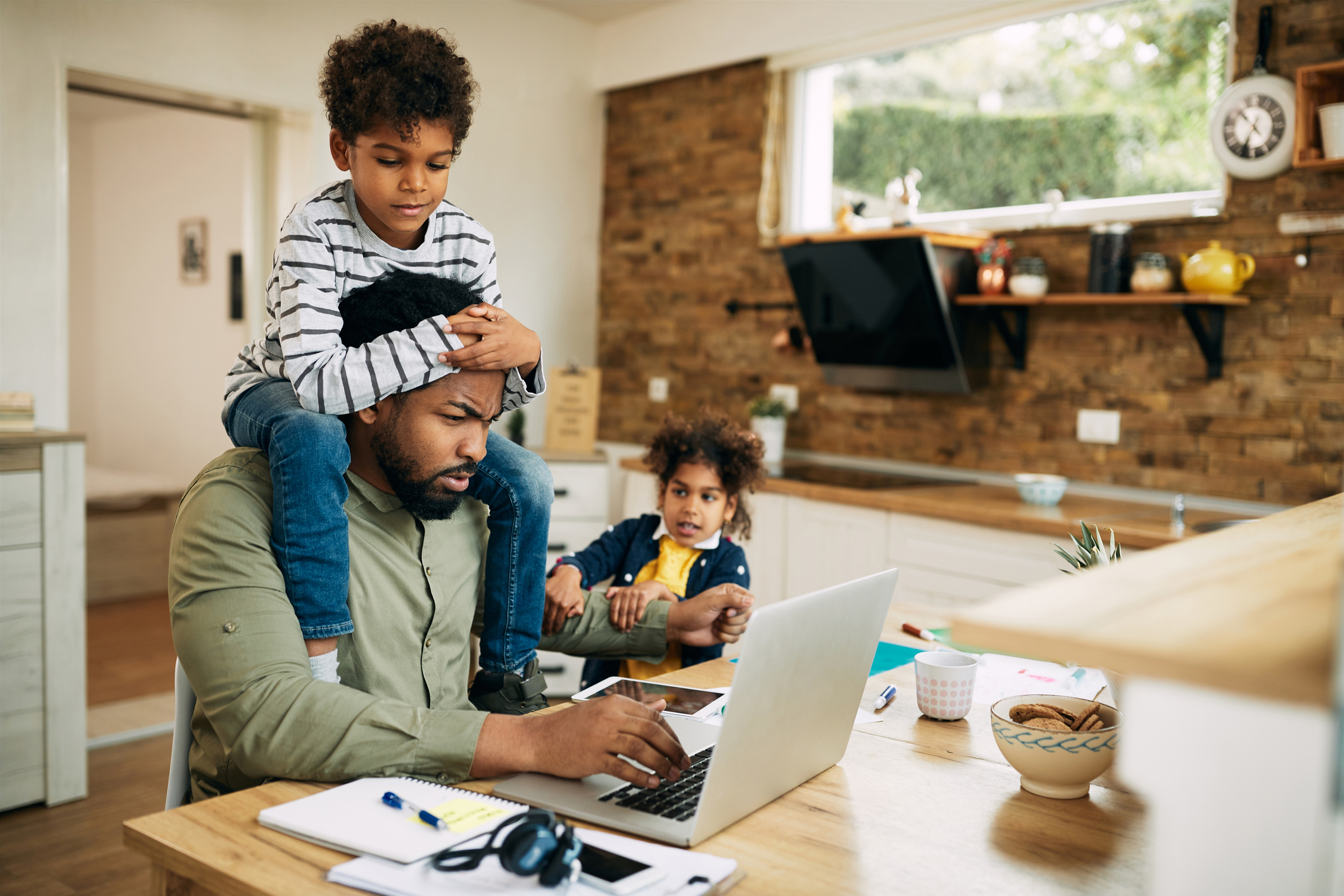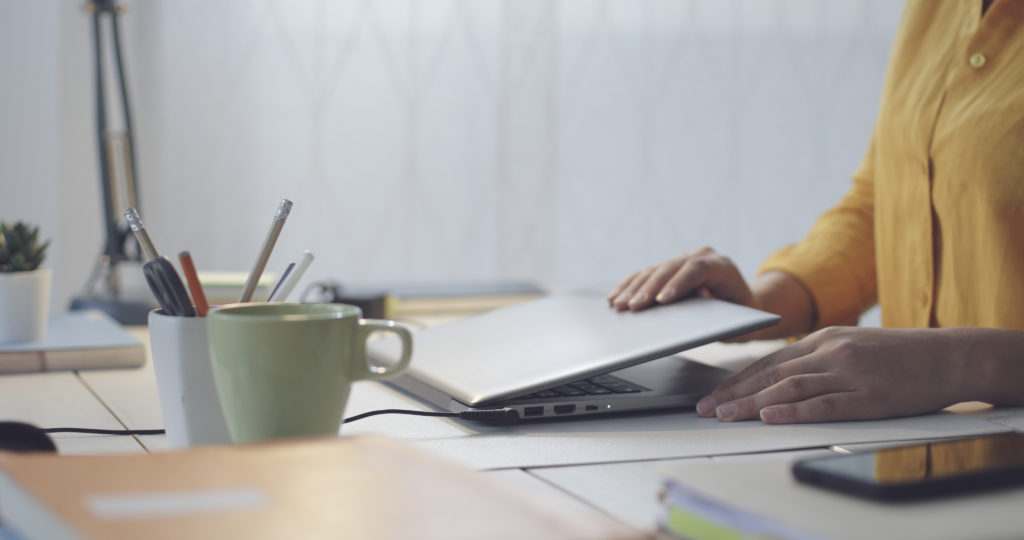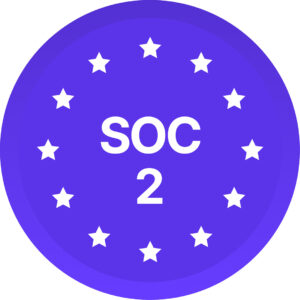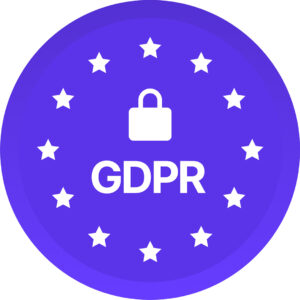The COVID-19 pandemic has turned our daily routines on their heads. It’s also introduced a whole new set of challenges to our work day. There are worries about our personal health and safety, additional distractions in our isolated home work environments, and decreased barriers between our work and personal lives. This upheaval of our daily routines has taken a toll on the mental health of many individuals who are dealing with new, unprecedented levels of workplace stress. What can we do to reduce the causes of this stress and mitigate the stress that can’t be eliminated? Before we answer that, let’s take a look at what stress is and how it affects us.
According to the Cleveland Clinic, stress is a reaction the body has to changes or challenges an individual may face, resulting in physical, emotional and intellectual responses. Any experience that triggers a stress response is called a “stressor” and can include just about any change in your daily routine, including project deadlines, life changes (moving apartments, starting a new job, etc.), or difficulties within relationships. While stressors are not inherently negative (your body’s built-in stress response, the ‘fight-or-flight reflex,’ can actually help you face stressful situations), if a person experiences stress over long periods of time, it can have physical impacts on the body including aches and pains, trouble sleeping, high blood pressure, digestive issues, and emotional and mental symptoms such as anxiety, depression, and panic attacks, seriously impacting an individual’s quality of life.
There are some stressors that are almost universal (such as natural disasters), but the majority are highly personal. An individual may find one set of experiences stressful (e.g. a school or work deadline) that the person next to them is unphased by. Additionally, an individual’s reaction to stressors varies significantly from person to person, causing two people to have very different physical and psychological reactions to the same stress trigger—one may become very anxious and unable to sleep while the other could experience headaches and fatigue.
Stress in the Workplace
We’ve all felt the stress while either working from home or going through a job transition. Research shows that 78% of workers reported that their mental health had been negatively impacted by the pandemic (SOURCE: Oracle) – so you’re not alone. During this time, we experienced 2 different types of stressors:
- Physiological: stressors that put a strain on our body such as illness, lack of sleep, injury, or extreme changes in our external environment
- Psychological: events, situations, individuals, comments, or anything we interpret as negative or threatening
When thinking about the workplace, we can acknowledge that we likely have to deal with psychological stressors everyday. However, with poor work-life balance, unachievable project deadlines & demands, difficult relationships with managers and coworkers, lack of control and autonomy, and psychological safety concerns among others, these stresses can lead to burnout.
What is Burnout?

Burnout has increased 38% since 2019
“According to a new American Psychological Association report, burnout is at an all-time high across professions. 79% of employees had experienced work-related stress in the month prior to their survey, and nearly 3 in 5 employees reported negative impacts of work-related stress, including lack of interest, motivation, or energy at work. 36% reported cognitive weariness, 32% reported emotional exhaustion, and 44% reported physical fatigue, which is a 38% increase since 2019” (Vogue, 2022).

Burnout is something talked about widely in the professional space, but not often met with the seriousness that its impact deserves. According to the World Health Organization, burnout can be characterized by feelings of exhaustion or depletion, increased mental distance from one’s job, feelings of negativity related to a job, and reduced professional efficacy from fatigue, brain fog, poor concentration, and procrastination. This is something that nearly 90% of workers experienced in 2021, and moreover 70% of employees would leave their organization for a different employer offering resources to reduce burnout (Forbes, 2021).
Intersectionality & Mental Health

When you add the often fundamentally stressful lived experiences of equity-deserving groups to this already difficult situation, you find that they’re suffering additional workplace stress in myriad nuanced ways. Statistics show that the pandemic’s mental health impact has been more prominent among racially & ethnically diverse groups—groups in which depression is already 60% higher than the white population. Throughout the COVID-19 lockdown, people from racially & ethnically diverse backgrounds have had higher levels of depression and anxiety, and lower levels of happiness and life satisfaction (UCL’s Covid-19 Social Study, 2020).
So What Do We Do About It?
The estimated annual cost of stress-related absences to employers in the United States is $300 billion (Business Insider, 2016) and the impact that workplace flexibility can have is significant, as 97% of people say that having a more flexible job would have a “huge” or “positive” impact on their quality of life (Mental Health America, 2022). Organizations need to be equipped to provide their employees with some level of workplace flexibility, especially in today’s business environment where 87% of employees expect their employer to support them in balancing work and personal commitments (Forbes, 2019). Employees are looking to find work/life harmony.
In cultures where long work hours and productivity are valued and rewarded, team wellbeing can suffer. It’s important that we give our team members support to resolve or learn to cope with our stressors and thrive in our workplaces. If you’re a manager concerned about how your team is handling stress and want to help provide more balance here are a couple ways you can help, pulled directly from the Diversio Recommendation Engine™ :
- Core Hours: The COVID-19 pandemic has blurred the lines between working hours and personal hours. It may be helpful to encourage your team to stick to a working schedule and unplug outside of those hours, as well as creating “Core Hours.” Allow employees to vary their arrival/departure times with a requirement of being present during specified “core hours”, e.g. 10 am-4 pm, and institute a “no-meeting” rule for the flex hours outside of core time.
- Flexible Work Policy Creation: Conduct a focus group with team members to understand the unique challenges associated with workplace flexibility within the organization. Use this feedback for change and create a Flexible Work Policy Guidebook. Some strong reference points are: City of Vancouver’s Remote and Flexible Work Toolkit for Employers and the Parental Playbook for supporting caregivers.
- Creating a Check-In Culture: Managers can directly ask how the team is feeling in their weekly 1:1 calls to allow open discussion of how to manage projects, conflicts with colleagues, or other work related stressors. Being an accessible and safe space for your team to voice concerns, feel heard, and find solutions can go a long way.
- Wellness / Self-Care Days: Highlight team members who are engaging in self-care practices such as taking time off. Everyone, especially leadership, should model healthy wellbeing behaviors to ensure toxic work habits are phased out. Human resources departments may even consider implementing a “wellness day” allotment to all employees to provide self care time throughout the year (Forbes, 2022).
- Pulse Check Survey: Stay in tune with your employees and their mental well being by collecting data as soon as possible. With the huge changes that we’ve seen in the workplace, it’s important to know the experiences of your workers and to have the tools to identify solutions as well as track progress.
Lastly, following general diversity, equity, and inclusion best practices will help manage overall team stress. You can learn more about best practices and how to implement them from the Diversio team, by contacting us here.
How to Decrease Your Own Stress
There are many stressors in life that we cannot avoid; It’s important to find balance between our stressors while taking care of our mind and body for sustained productivity and happiness. If you are an individual looking for ways to add more balance to your life, consider the following stress management tips:
- Build a Support System: Lock-downs, quarantines, and working from home due to the COVID-19 pandemic reduced engagement with our friends, family, and support systems. If these circumstances had an adverse affect on interactions with your support system, consider how you can improve these interactions. A healthy support system is critical to improving and sustaining good mental health. Consider scheduling a weekly zoom call or meet-up with your friends, family, or mentors to improve your support system.
- Try Meditation: Many people also find comfort in meditation and journaling as a way to calm their mind, manage their thoughts, and process difficult emotions. You can read more about how to meditate and its benefits on the Mayo Clinic’s website.
- Get Active: If you find yourself at home often or relatively immobile, consider finding ways to add more physical activity to your daily routine. Not only will this give your eyes a break from our increased screen time and break up the monotony of your day, but physical activity has been linked to improved mood. According to an American Psychiatry Association study “…people who engaged in 150 minutes or more of moderate or vigorous leisure time physical activity had 24% lower odds of having anxiety symptoms. More time spent exercising, 300 minutes or more per week, was associated with 36% lower odds of anxiety symptoms.” This advice continues to be recommended by health professionals, including the Cleveland Clinic.
- Set Boundaries: If you’re finding yourself all-consumed with work and having trouble setting boundaries, starting a new hobby or rediscovering an old one can help you dedicate time to something you enjoy and mark the end of your work day.
- Create an End-of-Day Ritual: When we are working from home we don’t have commutes. It can help us to change mindsets (and even relax) if we define a new end of day ritual. Your new routine could include some of the above suggestions, or something more unique to you and your interests. Whatever you choose, it should help you feel more grounded and connected to your mind and body to enjoy the rest of your day.
- Respect Your Personal Time: Above all, be sure to set clear boundaries between your work day and your personal time, particularly when working from your home. Give yourself permission to take breaks, schedule them in your calendar, and (this is important!) don’t skip them. Set an end time to your work day, then log out and turn off all work-related notifications (some of this can be automated, check your app preferences.)

Stress can have serious physical and mental effects on individuals. It’s important to learn to find balance in our personal and professional lives.
If you’re looking for a solution to measure stressors for employees in your workplace, the Diversio Dashboard is designed to help Human Resources and Diversity, Equity, and Inclusion professionals target the areas your organization may need to prioritize. Click here to schedule a demo.
This article was researched and written by communications professionals and should not be interpreted as medical advice. If stress is adversely affecting your physical or mental health you should consult your doctor on the best ways to address your stressors and the symptoms you are experiencing.
If you or someone you love is experiencing high levels of stress that is affecting their mental health and are unsure what to do, you are not alone and there are people who want to help.
Resources in the United States of America:
National Suicide Prevention Lifeline 1-800-273-TALK (8255)
Substance Abuse and Mental Health Services (SAMHSA) National Helpline
National Alliance on Mental Illness (NAMI)
Anxiety and Depression Association of America (ADAA)
American Psychological Association (APA)
National Institute of Mental Health (NIMH)
Centers for Disease Control and Prevention (CDC)
Mental Health America (MHA)
Resources in Canada:
Canada Suicide Prevention Service 1-833-456-4566
Canada Public Health, Mental Health Services

